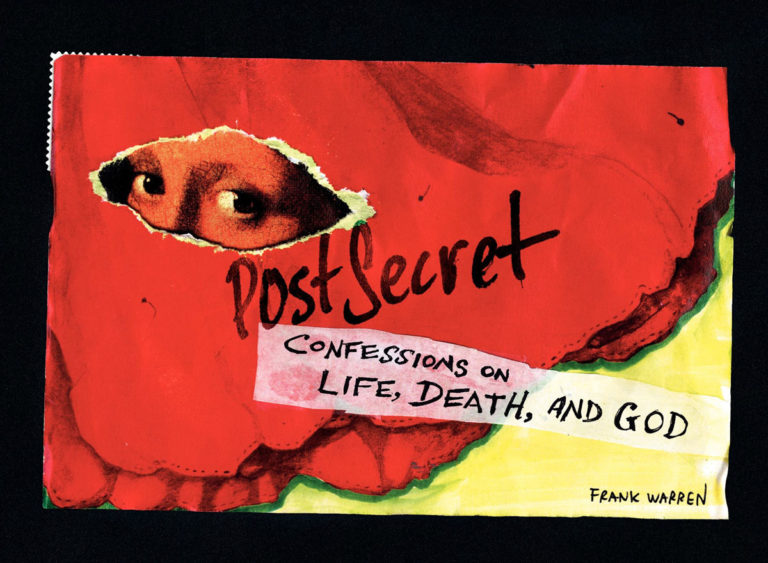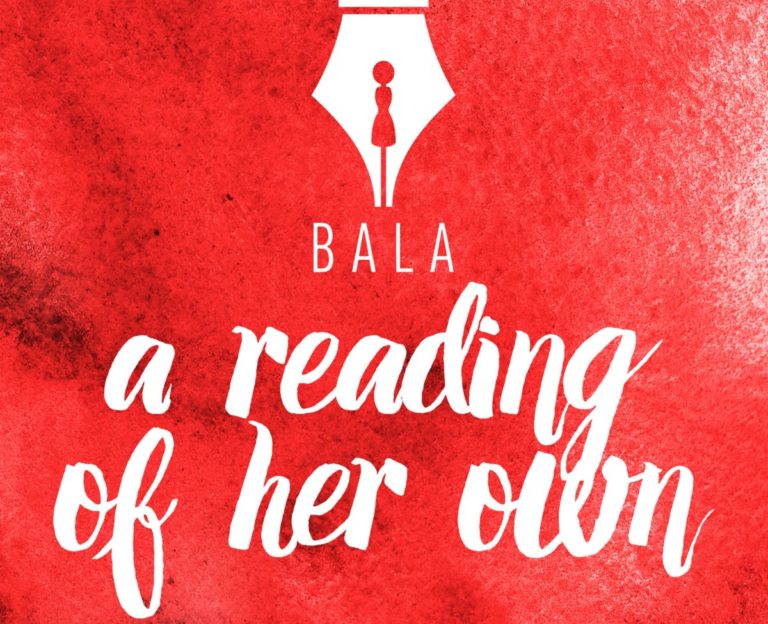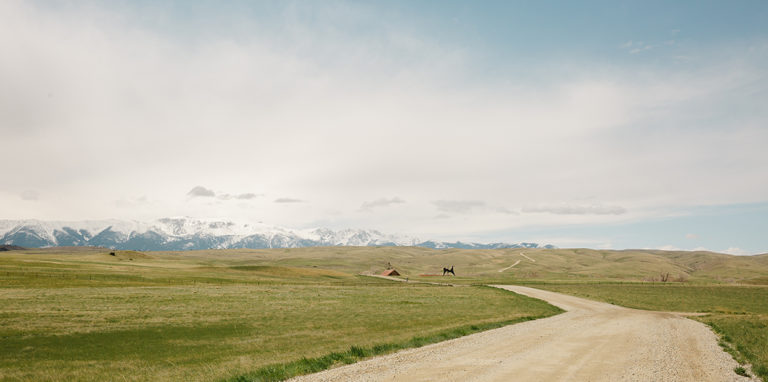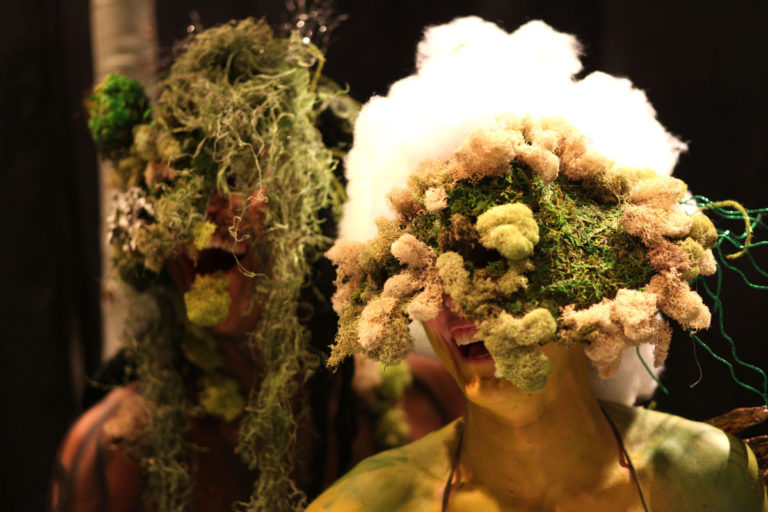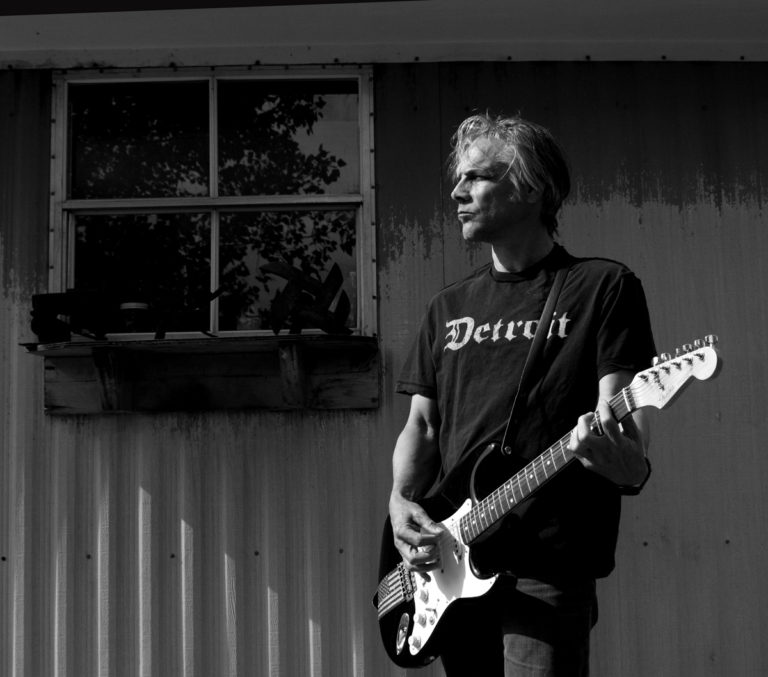Clyde Aspevig’s symphony of oils
At first glance, a Clyde Aspevig oil painting appears to be a snapshot from a moment in time—something you’d imagine only a photograph could capture. Looking deeper into the layers of paint, brush strokes converge into a melding of color and shape, as though the painting were a musical composition.
“A photograph is going to show a very cold, mechanical image,” Aspevig said, “but a painting shows all the human intuition and qualities that make our interpretation of nature beautiful.”
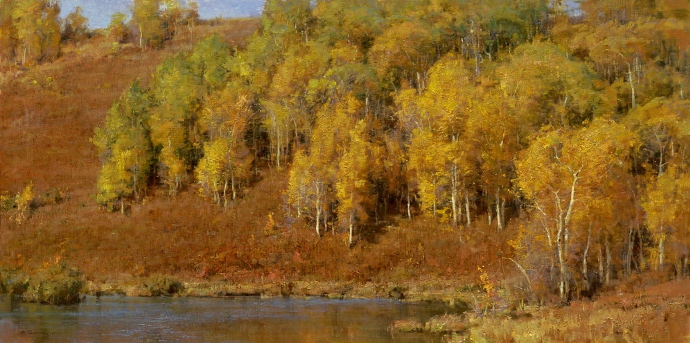
Aspevig paints naturalistic landscapes in the ways that composers create music—describing the syncopation of shapes in his paintings like visual notes on a page. Orchestrating his works, Aspevig softens the scene as a musician would apply pianissimo to a quiet section of music, then builds toward the center of interest in the piece with powerful brush strokes—building a crescendo of oil paints and textures.
[aesop_quote background=”#eb999d” text=”#ffffff” width=”70%” align=”center” size=”2″ quote=”Music, just like art, is innate. It’s something that we have to do. It’s a part of us.” cite=”Clyde Aspevig” parallax=”off” direction=”left”]
Aspevig describes art and music as interrelated, as both are the earliest forms of expression. “Music, just like art, is innate. It’s something that we have to do. It’s a part of us,” he said.
When Aspevig paints, he looks at his surroundings in an abstract form, taking into account the shapes. Even though his paintings seem detailed, his landscapes are composed of abstractions. “I don’t paint every leaf on a tree and every blade of grass. I paint the idea of it—a symbol of it.”
Aspevig, who grew up near Rudyard in rural northern Montana, didn’t have access to an arts education, but was fortunate to have parents who understood and encouraged his passion for painting. Though he dabbled in watercolors in college, Aspevig said oil painting has consumed his life. “The fun thing about oil painting is that it’s more forgiving than watercolor. Oil paints have a lot more flexibility and you get to try all these different possibilities.”
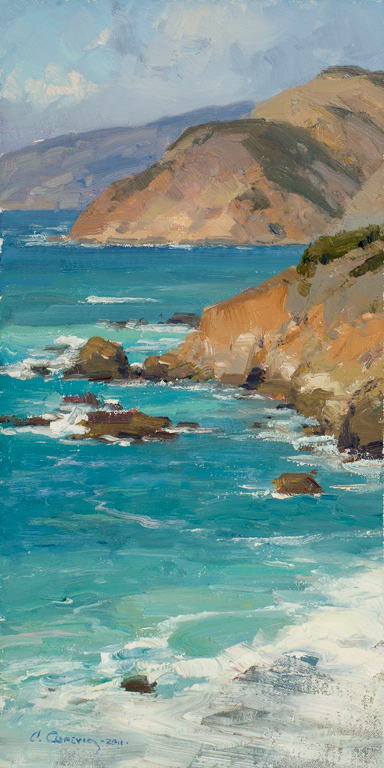
What brought you to the medium of paint?
From kindergarten on, I was always dabbing in art: watercolor, drawing, pen and ink. One summer, when I was 10, I broke my leg in a horse riding accident. I was staying with my uncle at the time, and he got me started in oils.
How did growing up in Montana influence your artwork?
Growing up on the highline, the big sky and the flat plains dominated the landscape. Sitting on the tractors as a young boy, looking at the sky and nature, watching the raptors and hawks following the plow, I developed this attachment to the land that any farmer or rancher understands. That had a huge impact on my life. Landscape is what I was destined to create.
Tell me a bit about your technique.
I used to think if I copied every detail, the painting would be more realistic, but that is not the way the human mind sees. We don’t see with our eyes, we see with our brains. I don’t pay attention to detail. I rely on an intuitive reaction to the environment—I have to make up certain symbols in a very immediate way, which helps create my own personal style.
Aspevig’s fifth book, “Visual Music – The Landscapes of Clyde Aspevig” is available for order at Aspevig’s website or by calling Juniper Ridge Studios at 294-5677.
Article originally published in Magic City Magazine, April 2012.

